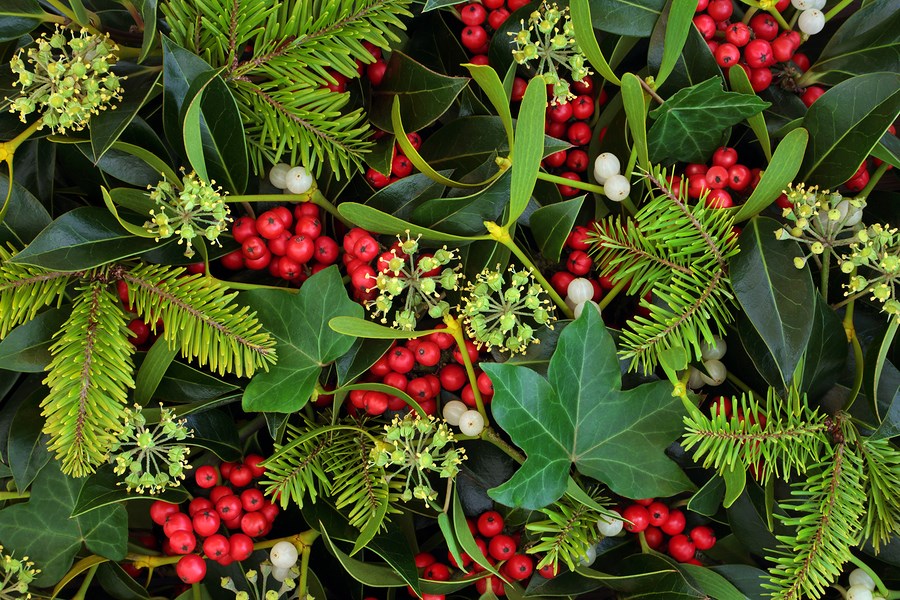A traditional winter green rarely available to us in its natural form is mistletoe. The mistletoe associated with Christmas is a European plant growing on willow, oak, apple and other deciduous trees from Britain to Europe and into northern Asia. A different species, hardy to zone 6, grows in oak, elm and poplar trees in the eastern US.
There are 1,300 species of mistletoe growing around the world, most of them in tropical regions. However, more than 30 species are found on the North American continent, including some in Canada.
Although the traditional mistletoe has white berries, a red-berried mistletoe grows in Europe, mostly in olive trees in Spain. Europe also has a yellow-berried mistletoe growing primarily in oak trees. Whereas others are evergreen, this mistletoe is deciduous, losing its leaves at the same time as the host tree.
All mistletoe species are semi-parasitic plants, living on a variety of host trees. Mistletoe has specialized tissue that grows into the host plant and combines with the living tree.
Many mistletoe plants have green leaves that supply some energy, but they depend on the trees for water and minerals. The evergreen mistletoe clusters are easily seen in fall and winter, when the host tree has shed its leaves. They weaken the host tree, and can eventually kill it. The mistletoe dies when the tree dies.
Although the white berries of the familiar traditional mistletoe are poisonous for humans, they are an important food source for birds. Birds digest the pulp of the berry and excrete the living seed, thus distributing the seeds on new host trees.
Several species of birds build their nests in mistletoe clumps.
The tradition of hanging mistletoe in the house goes back to the times of the ancient druids. They believed that it possessed mystical powers that brought good luck and warded off evil spirits. It was also used as a sign of love and friendship in Norse mythology.
The custom of kissing under mistletoe comes from England. The original custom was that a berry was picked from the sprig of mistletoe before the person could be kissed, and when all the berries had gone, there could be no more kissing! Don’t try this with the plastic mistletoe, or there will be no kissing at all!




